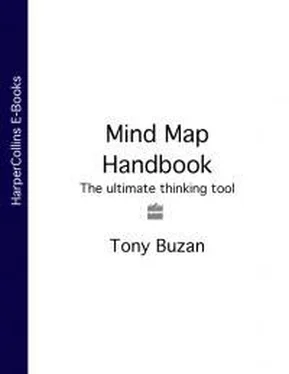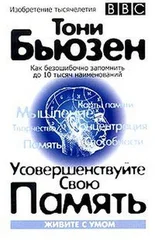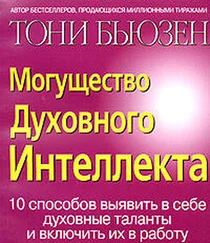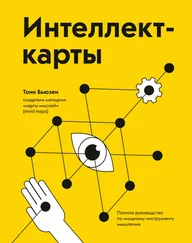Creative
Not Creative
______________
______________
______________
______________
______________
______________
______________
______________
______________
______________
______________
______________
______________
______________
______________
______________
______________
______________
______________
______________
______________
______________
______________
______________
______________
______________
______________
______________
______________
______________
______________
______________
______________
______________
The ideal answer to the above exercise is that all aspects of your daily life are intrinsically creative, and that all of them can be enhanced by applying more of the full range of your left and right-brain skills. Consider the following everyday activities; they are all dependent upon Creativity:
cooking
gardening
carpentry
letter and message writing
looking after and training pets
planning holidays and special events
D.I.Y. and home improvements
playing football, or any other sport
budgeting for special events/expenses
decorating
route finding and map reading
flower arranging
gift wrapping
setting a table
arranging house plants
planning meetings
photography
relationships
Each one of these activities can be made more interesting and creative by adding the ‘spices’ of the left and right-brain skills. In this creative arena, little things can mean a lot. Gathering shells and driftwood from a beach and displaying them in your home, or using it for wood-turning; making patchwork quilts from a multitude of scraps of otherwise useless material; decorating your dinner table by putting a flower on each person’s plate and using shells from the beach from which to serve your salt and pepper; or finding new and different routes to get to work each week, are all things that take little effort, and which add immeasurably to the creative feel of your life.
Holiday times and seasonal celebrations especially, are wonderful opportunities for displaying your Creative Intelligence. Make it a Creative Feast with decorations, visual beauty and visual humour. Create your own cards and gifts to give to people, or plan a dinner party for your friends – the possibilities are endless!
6. Your Mastermind Group
All the great creative geniuses had heroes or heroines to whom they looked for inspiration. Alexander the Great had his tutor Aristotle; Julius Caesar had Alexander the Great; all the great geniuses of the Italian Renaissance had the examples of Classical antiquity; the Russian Empress Catherine the Great looked to Peter the Great for inspiration; Mohammed Ali had Sugar Ray Robinson; Isaac Newton had Socrates; Stephen Hawking had Isaac Newton, and so on, throughout the pantheon of genius.
The technique the creative greats used was to hold imaginary conversations with their heroes, asking them for ‘thoughts’ and inspiration. This Creative Thinking technique can be used for pursuing mighty scientific and cultural goals, and it can also be used by everyone in their normal daily lives.
I have personally found this technique exceptionally valuable in my life, and have used it successfully for over 20 years. It has allowed me to be especially creative whenever I have encountered any major opportunity or problem. The way I use this technique is as follows: when confronted with a situation which requires help from my Mastermind Group of heroes and heroines, I select the ones who are most appropriate for the given situation and I then imagine what advice each would give me in order to take greatest advantage of the situation. I select my heroes and heroines for their unique creative approaches, for their energy and for their astonishing success, knowing that all of this will ‘feed in’ to me and my own Creative Thinking processes.
Members of my Mastermind Group on whom I regularly call for help are:
Our Creativity guide Leonardo da Vinci, for his boundless Creativity and inventiveness.
Queen Elizabeth I, for her ability to overcome astonishing odds, to be very flexible while at the same time being steadfast, and to learn with incredible rapidity.
Buddha, for his deep exploration of the self, and for his ability to withstand the utmost suffering and deprivation.
Mohammed Ali, for his astonishing originality and creativity, combined with his representation and defence of a minority group.
Morihei Ueshiba, the founder of the Japanese martial art of Aikido. In this art, the Aikido student is taught to turn any violence into tranquillity, while simultaneously remaining steadfast.
The dedicatees of the Power of Creative Intelligence, who are my living Mastermind Group!
As you read through the Power of Creative Intelligence section, select four or five of the historical greats for your own personal ‘Mastermind Group’. Supplement this group with members of your family and friends whose powers of thinking, analysis and creativity you especially admire and respect. Whenever you have a situation or problem facing you, hold imaginary conversations with each of your internal geniuses, and imagine what answers and advice they would give you in this situation. You will be surprised (and sometimes stunned!) by the excellence of the results.
7. Play Einstein’s Creative Imagination Games
On a daily or weekly basis, play an Einstein Creative Imagination Game. We have seen how Einstein would pose himself an interesting question such as, ‘What would it be like to go for a ride on a sunbeam to the end of the universe?’ Or, ‘If I travelled at the speed of light away from somebody, would I be invisible?’ Or, ‘Does light bend, and if so, how do I know where the thing is that I am seeing?’ He then let his imagination run riot with all the possible solutions, no matter how bizarre or crazy they might seem to be. Try it with one of your own areas of interest, and see what creative answers you generate.
8. The RIGHT Emphasis
As our schools, work and culture tend to emphasize the left cortical skills, particularly look at how you can integrate the right-brain skills. Think of three ways to add each right-brain skill into your everyday work and life – your life will become more enjoyable, as well as more efficient.
9. Use Both Sides of your Body
By using both sides of your body, you will use both sides of your brain. Learn to juggle, or use your non-dominant hand in your daily activities, such as combing your hair, brushing your teeth, dialling the phone, stirring a pan on the stove, writing, etc. You could also try eating using the cutlery the ‘wrong way round’!
10 Make Colourful ‘Brain-speak’ Mind Map Notes
Notes are your brain’s special way of communicating with itself. It is much easier for your brain to work on its creative thoughts, problems and memories by putting notes down externally than it is to keep them all ‘up in the air’ inside itself – just try calculating long division in your head without the aid of pen and paper!
When you are taking notes, use your right as well as your left brain, adding interesting focus to your notes by using colour, images, spatial planning and visual rhythm. This note-taking technique is called a Mind Map, and this whole theme will be developed comprehensively in the next chapter.
The ideas in this chapter are summarized in Plate 17.
3.3
Infinite Creativity – Mapping Your Mind with Mind Maps
Читать дальше












